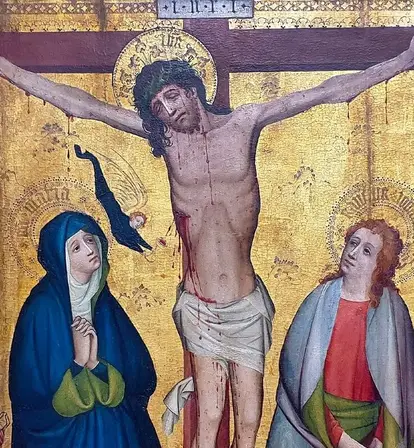Described in the New Testament of the Bible and other ancient sources, the death of Jesus Christ was a truly agonizing affair.
One of the world’s most recognizable images is that of Jesus Christ’s death on a cross. The religious symbol appears in countless churches, museums, sculptures, illustrations, and on pieces of jewelry. So, what is the true story of the crucifixion of Jesus, and how did he die?
The story of Jesus’ death can be found in the Biblical Gospels, described by the evangelists Matthew, Mark, Luke, and John. They write of Jesus’ final moments and humiliations, and how he suffered on the cross for six hours.
Some details surrounding the death of Jesus Christ are only mentioned in the Christian Bible, and can be difficult to find in other sources. But historical records from the time period do mention Jesus’ life and death, suggesting that stories about Jesus’ crucifixion are based in historical fact.
Who Was Jesus Christ?
Stories about Jesus from the Bible’s Gospels of Matthew and Luke say that he was born in Bethlehem, and he was probably born between 7 B.C.E. and 1 B.C.E. He was almost certainly not born on December 25th, however, and his real name may have actually been Yeshua.
Indeed, there’s a great deal of ambiguity about Jesus, including his height, his race, and his other physical traits. But what does seem clear, according to the Gospels, is that Jesus became a traveling preacher as an adult.
In his 30s, he purportedly dedicated his life to preaching and healing, and many of his followers began to believe that Jesus was the Messiah. (His surname “Christ” comes from the Greek christos, a translation of the Hebrew word messiah, meaning “anointed one.”) This put Jesus at odds with some Jewish religious leaders.
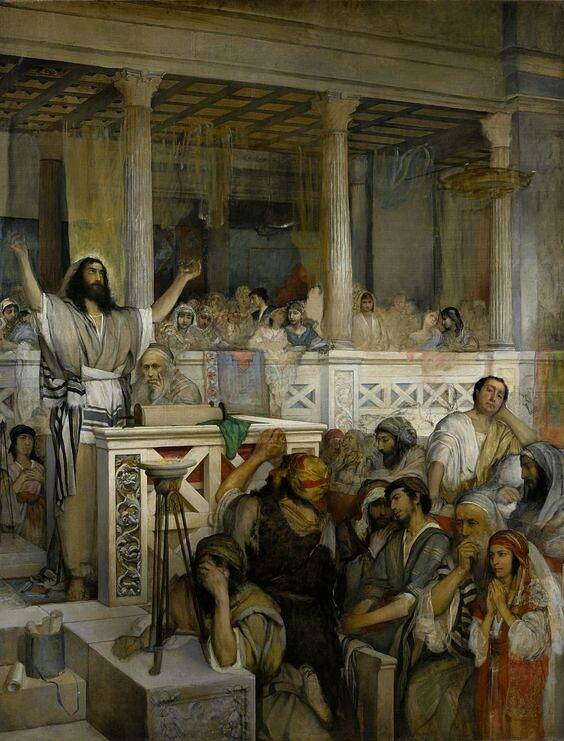
Public DomainMany of Jesus’ followers saw him as the Messiah, which put him at odds with some Jewish leaders.
They feared his growing power, and Jesus reportedly sensed that leaders in the predominantly Jewish Roman province of Judaea (present-day Israel and Palestine) would soon want him dead. “Jesus began to explain to his disciples that he must go to Jerusalem and suffer many things at the hands of the elders, the chief priests and the teachers of the law, and that he must be killed and on the third day be raised to life,” the Gospel of Matthew says.
Around 30 or 33 C.E., Jesus was arrested by Roman authorities after one of his own disciples, Judas Iscariot, made a deal to turn Jesus over to the Roman government for 30 pieces of silver. Judas’ betrayal, the Gospels say, ultimately led to the crucifixion of Jesus near Jerusalem.
Inside The Crucifixion Of Jesus
After his arrest, Jesus was put on trial for claiming to be “King of the Jews.” Bible Study Tools reports that under Roman law, this accusation was considered rebellion against Rome. It was punishable by crucifixion.
According to the Gospels, Jesus was brought before Pontius Pilate, the Roman governor of Judaea, who oversaw the region between 26 C.E. and 36 C.E. Though Pilate was reportedly resistant to finding Jesus guilty, he ultimately bowed to public pressure and allowed Jesus to be crucified.
On the day of Jesus’ crucifixion — largely believed to take place in 30 C.E. or 33 C.E. — he was dressed in a purple robe, the color of royalty, and forced to wear a crown of thorns as his executioners taunted him as the “King of the Jews.” Roman soldiers made him carry his cross to a hill called Calvary, where he would be crucified alongside two criminals.
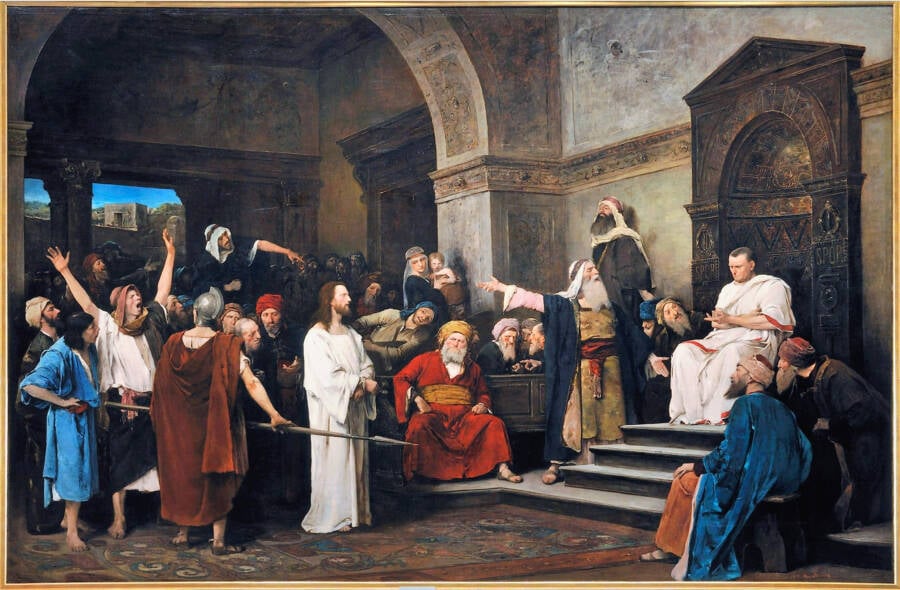
Public DomainPontius Pilate, a historical figure who oversaw Judaea between 26 C.E. and 36 C.E., agreed to the crucifixion of Jesus.
There, he was stripped and nailed to the cross. Though scripture claims that nails were pounded into his hands and feet, some modern-day scholars believe that nails were driven through Jesus’ wrists, not his hands. According to HISTORY UK, this would have better affixed him to the cross.
“Father, forgive them,” Jesus reportedly said, as the Roman soldiers crucified the two criminals on either side of him, “for they know not what they do.”
As Jesus writhed on the cross, a crowd gathered at his feet to jeer and mock him. The Jewish leaders declared, “He saved others; let him save himself, if he is the Christ of God, his Chosen One!” The Romans also nailed a sarcastic sign above Jesus’ head reading, “This is the King of the Jews” (INRI), divided his clothing among themselves, and cast lots for his garments.
Then, they waited for him to die.
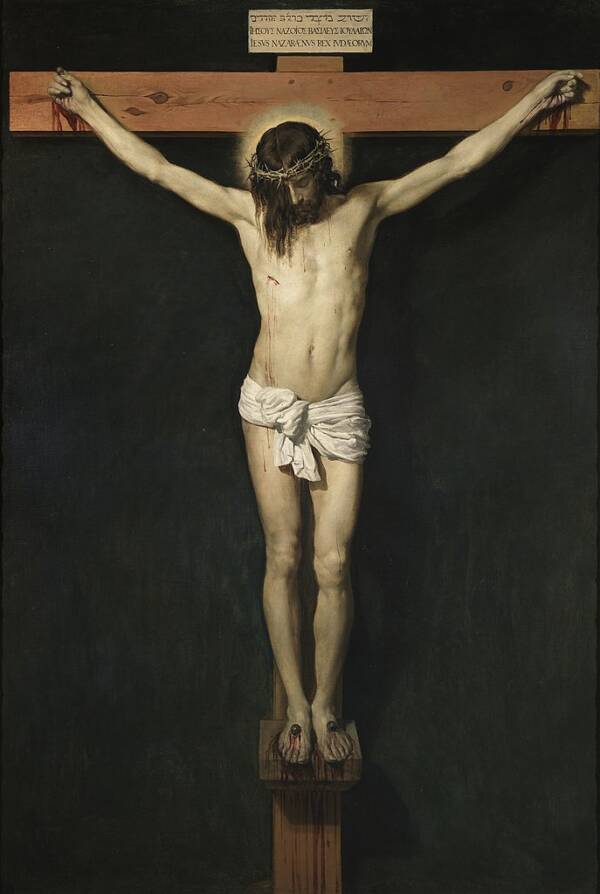
Public DomainA depiction of the crucifixion of Jesus from circa 1632.
In the Gospels, Jesus spends six hours on the cross before he perishes. At one point while being crucified, Jesus cried, “My God, my God, why have you forsaken me?” According to the Gospel of Luke: “Jesus called out with a loud voice, ‘Father, into your hands I commit my spirit.’ When he had said this, he breathed his last.” At that point, the sky was dark. And the Gospels claim that the ground began to shake, as if the Earth was reeling over Jesus’ death.
“And when Jesus had cried out again in a loud voice, he gave up his spirit,” explains the Gospel of Matthew. “At that moment the curtain of the temple was torn in two from top to bottom. The earth shook, the rocks split and the tombs broke open.”
In fact, HISTORY UK reports that there really was seismic activity in the area around the time of Jesus’ crucifixion (though it’s impossible to confirm whether a quake happened at the exact same time that Jesus died).
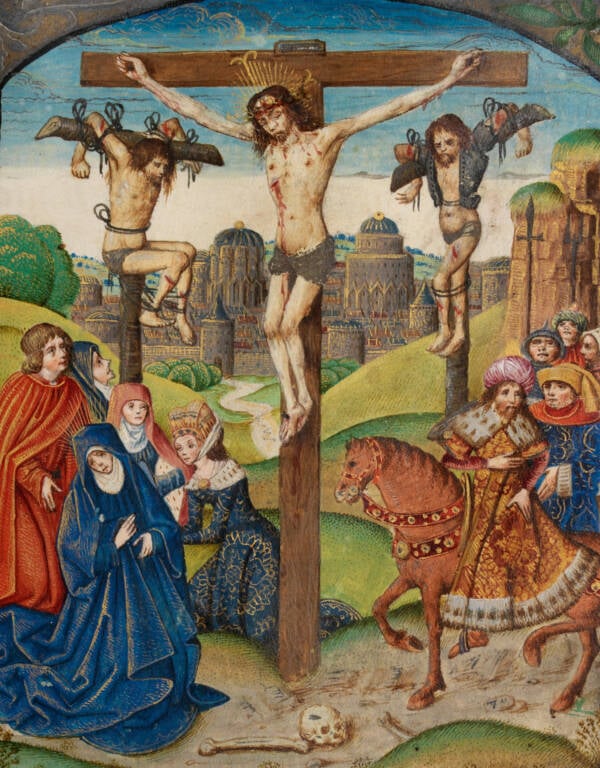
Public DomainThe crucifixion of Jesus allegedly lasted six hours before he died on the cross.
Whether or not a quake happened, the crucifixion of Jesus finally ended with his death. Some modern-day medical experts have suggested that pulmonary embolism killed him, while others say that cardiac rupture, asphyxiation, and shock are more likely explanations. And yet another theory proposes that he actually died from carrying the cross, as he may have suffered from a dislocated shoulder that led to fatal internal bleeding.
A Roman soldier speared him in the side to make sure he was dead, and then Jesus was taken down from the cross and buried in a rock-hewn tomb. But, of course, the story doesn’t quite end there.
What Happened After Jesus Died
If Jesus Christ was crucified as the Gospels say, then he was one of many men to die on a cross in ancient times. As HISTORY explains, crucifixion was initially created by the Assyrians. It then spread to Persia — where Alexander the Great discovered it and then brought it back across the Mediterranean — and it was picked up by the Romans in the third century B.C.E.
Romans used crucifixions to great effect, mostly in their distant territories as a way to suppress rebellion from activists. As such, the crucifixion of Jesus was just one of many to happen under their rule. But his stands out because of what the Gospels say happened next — his resurrection.
According to the Gospels, Mary Magdalene and “the other Mary” went to Jesus’ tomb and encountered an angel. “Do not be afraid, for I know that you are looking for Jesus, who was crucified,” the angel reportedly told them. “He is not here; he has risen, just as he said. Come and see the place where he lay. Then go quickly and tell his disciples: ‘He has risen from the dead and is going ahead of you into Galilee. There you will see him.’ Now I have told you.”

Public DomainAfter Jesus’ crucifixion, Mary Magdalene and others said they found his tomb empty and learned he’d been resurrected.
News of the reported resurrection spread, confirming to many that Jesus was indeed the Messiah and the Son of God. But how do ancient sources — besides the Bible — explain how the crucifixion of Jesus happened?
Though few historical records exist, Jewish and Roman historians did seem to acknowledge Jesus’ death and the subsequent rise of Christianity. According to HISTORY, a Jewish historian named Flavius Josephus wrote in 93 C.E. of “Jesus-who-is-called-Messiah” and how Jesus “did surprising deeds” before Pilate allowed his crucifixion. (It is possible that later Christians may have modified portions of Josephus’ text.)
Roman historian and senator Tacitus similarly wrote in 116 C.E. that Emperor Nero blamed “the persons commonly called Christians, who were hated for their enormities” for the burning of Rome in 64 C.E. Tacticus also provides other details: “Christus, the founder of the name, was put to death by Pontius Pilate, procurator of Judea in the reign of Tiberius.”
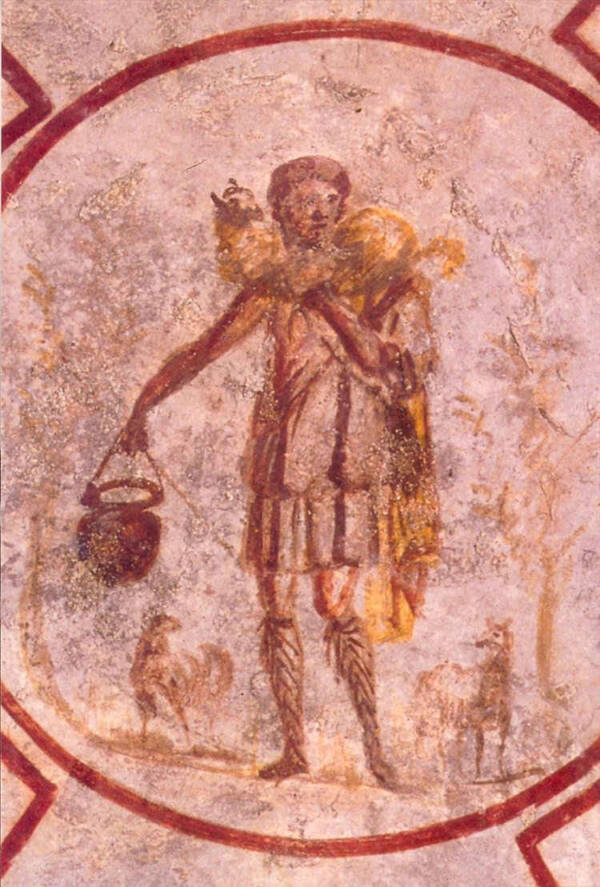
Public DomainAn illustration of Jesus Christ from the third century, where Jesus is depicted as the “Good Shepherd.”
Though records like these suggest that Jesus truly existed and was executed by Pilate, the crucifixion of Jesus did not become an important part of Christianity until later. TIME reports that images of Jesus dying on the cross were considered too gruesome for years after his death, and thus Jesus’ crucifixion did not play an important role in Christian iconology at first.
It wasn’t until about 400 C.E., after the rise of the first Christian Roman emperor Constantine — and his abolishment of crucifixion — that the cross became such a significant image in Christianity. From that point on, Jesus’ crucifixion became a crucial part of the Christian narrative, a symbol of triumph over sin and death, and began to appear more frequently in art.
Whether or not you believe Jesus’ crucifixion happened exactly as the Bible said it did, the story of his death has had incredible staying power. There are an estimated 2.6 billion Christians in the world as of 2023, and one of the most common ways to signal a belief in Christ is to wear a cross.
After reading about how Jesus Christ died, go inside the fascinatingly complicated question of who wrote the Bible. Or, look through these surprising facts about life in ancient Rome.
